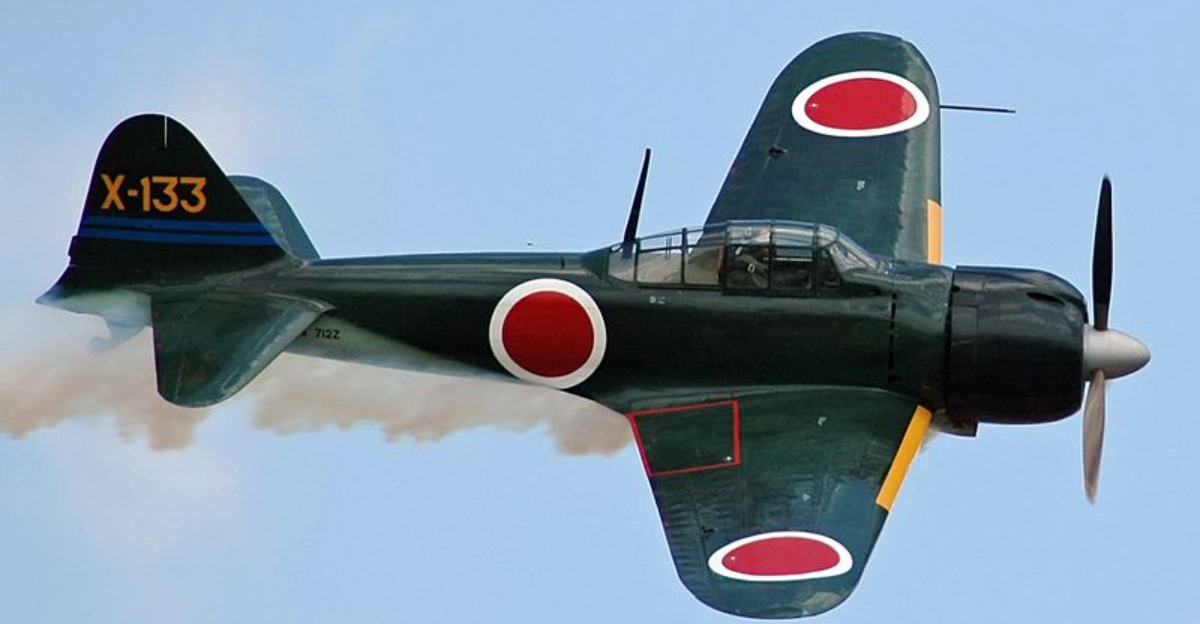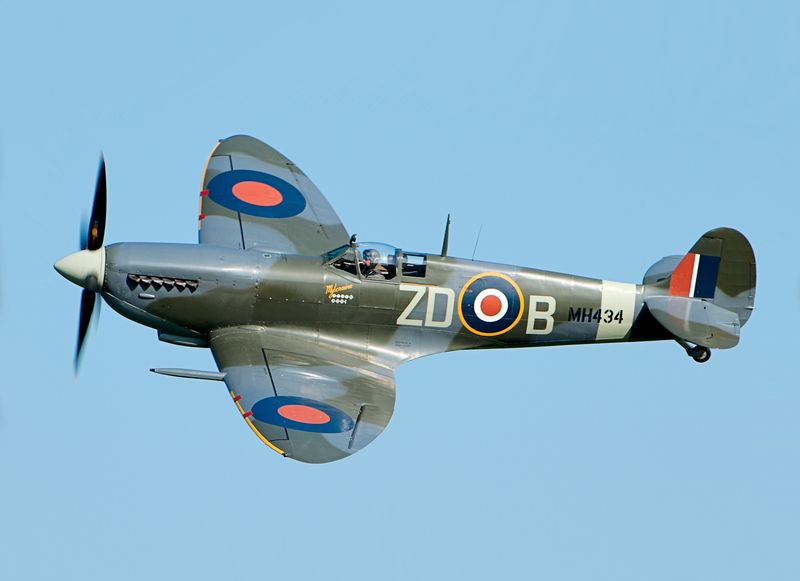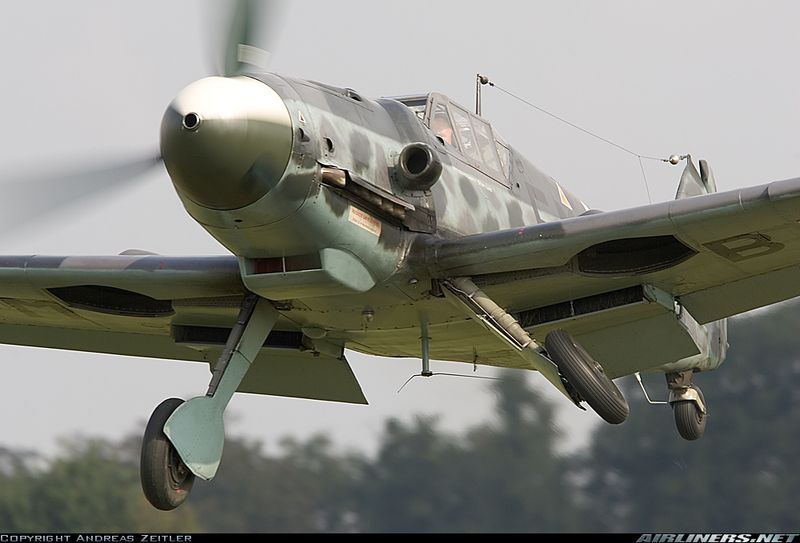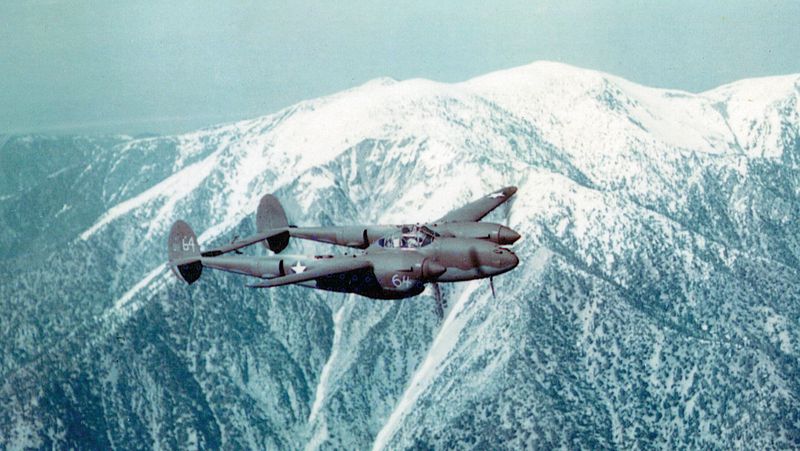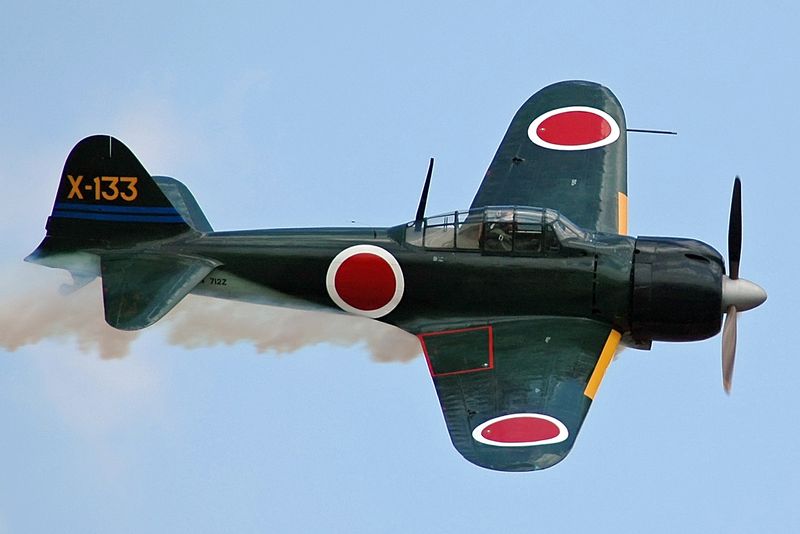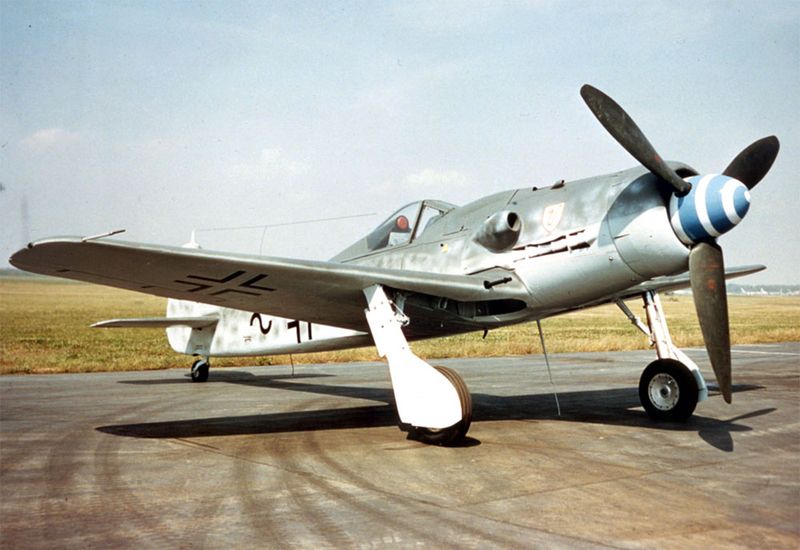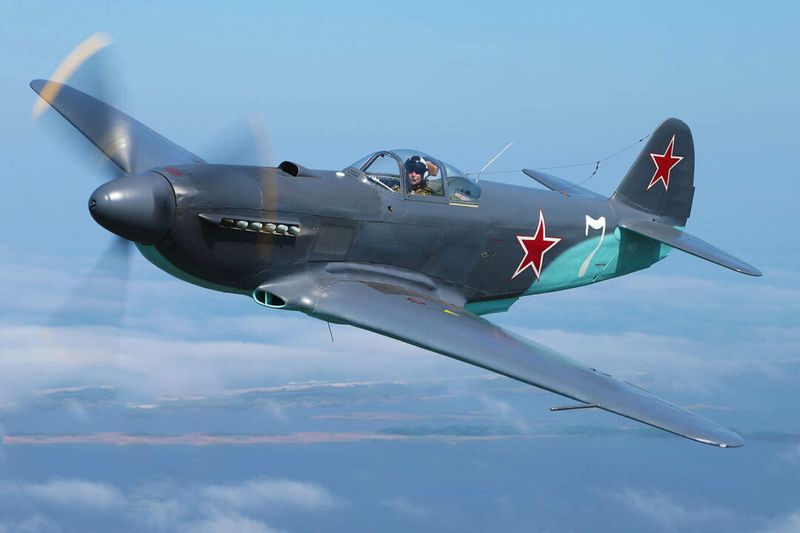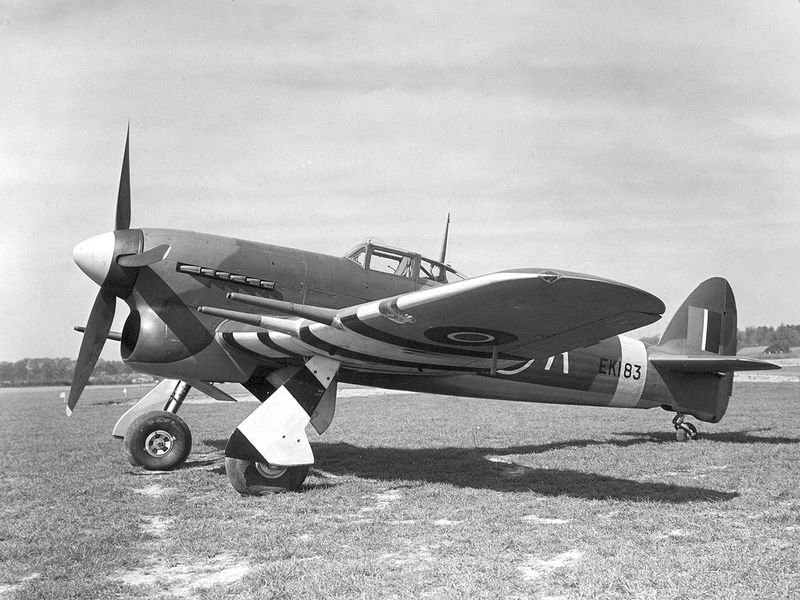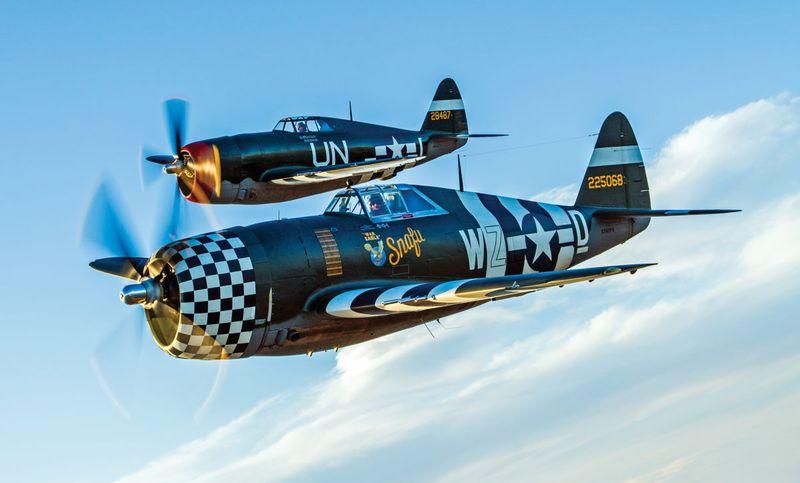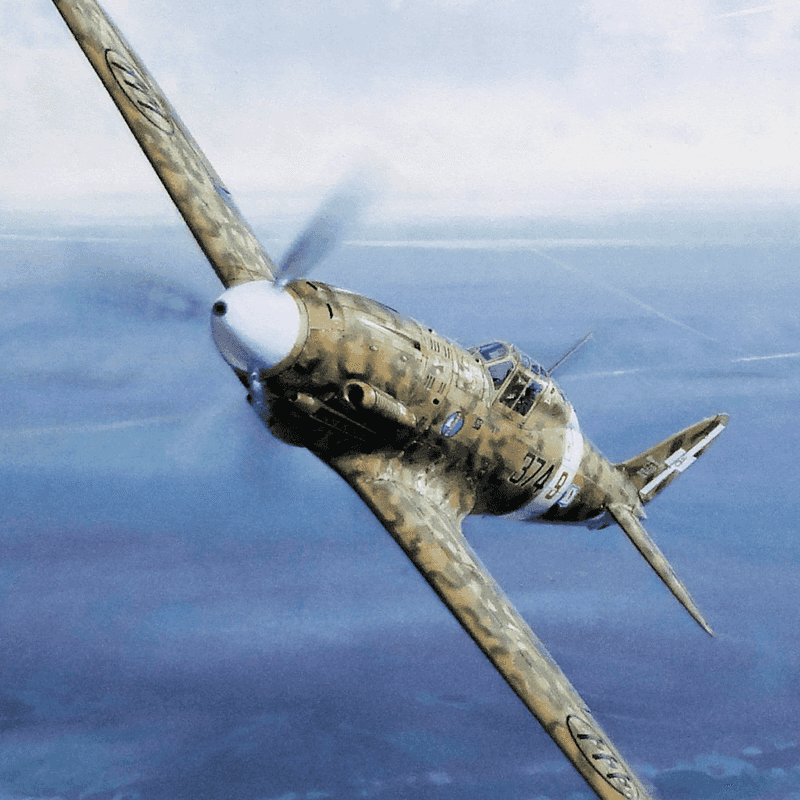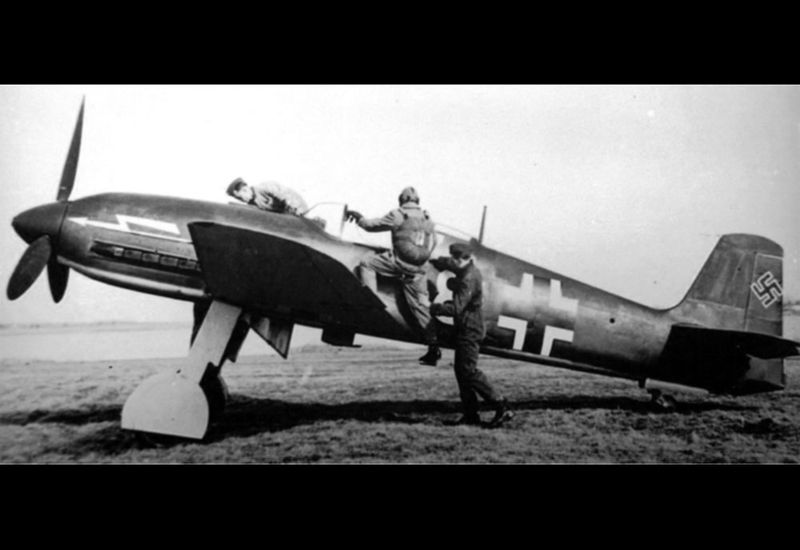World War II saw the skies dominated by a multitude of fighter planes, each with its own strengths and weaknesses. These aircrafts, while exceptional in their own right, were hindered by critical flaws that impacted their overall effectiveness. Join us as we explore ten near-perfect fighter planes of WWII and the single flaw that held each back, offering a fascinating glimpse into the intricacies of wartime aviation.
1. Supermarine Spitfire
Ah, the Supermarine Spitfire! Known for its graceful, iconic design and exceptional performance in dogfights, the Spitfire became a symbol of British resilience. This beauty danced through the skies with unparalleled agility, almost as if mocking its adversaries. However, it lacked one essential feature: range.
Designed primarily for short-range missions, the Spitfire couldn’t escort bombers deep into enemy territory, leaving them vulnerable to attacks. While its shortcoming didn’t diminish its legendary status, it did limit its operational versatility. WWII era pilots often found themselves wishing for just a bit more fuel.
2. Messerschmitt Bf 109
The Messerschmitt Bf 109 was Germany’s primary fighter, boasting speed and firepower that made it a formidable opponent. With its sleek, aerodynamic frame, it was the pride of the Luftwaffe. Yet, its Achilles’ heel lay in its landing gear.
The narrow undercarriage made takeoffs and landings particularly treacherous, especially on rough or muddy fields. Rookie pilots often struggled, resulting in numerous accidents. Despite its prowess in the air, this flaw made ground operations a persistent challenge. The Bf 109’s designers prioritized flight performance, but sometimes, the ground was its greatest foe.
3. P-38 Lightning
The P-38 Lightning, an American marvel, was distinctive with its twin-engine design and central pilot cockpit. In the Pacific theater, it excelled, but in Europe, it faced challenges.
High altitude performance in cold climates exposed its weaknesses. Engine reliability dropped, and the cockpit heating system was found wanting. Pilots faced freezing conditions, impairing their effectiveness. While it remained a beloved aircraft, its European performance was marred by these environmental struggles. Known as the “Fork-tailed Devil,” the P-38 was a mixed blessing, its versatility hindered by the chill of the European front.
4. Mitsubishi A6M Zero
The Mitsubishi A6M Zero was Japan’s premier fighter in the early years of WWII, revered for its agility and range. This nimble flyer danced through the skies, evading opponents with ease. However, its design sacrificed armor for maneuverability.
Lacking self-sealing fuel tanks and armor plating, the Zero was vulnerable to even minor damage. As Allied tactics improved, the Zero’s shortcomings became glaringly apparent. Pilots loved its grace, but when hit, survival was a gamble. The Zero’s lightweight design was both its strength and its fatal flaw in a rapidly evolving aerial battlefield.
5. Focke-Wulf Fw 190D “Dora”
The Focke-Wulf Fw 190D “Dora” arrived as a breath of fresh air for the German Luftwaffe, an advanced evolution of its predecessors. With improved high-altitude performance and speed, it was a formidable adversary.
However, the Dora’s introduction came too late in the war to make a significant impact. As Allied forces advanced, the Dora struggled to find its place. Despite being a technical masterpiece, timing was not on its side. The Dora’s potential was undeniable, but by its debut, Germany was already on the back foot, limiting its strategic utility.
6. Yakovlev Yak-3
The Yakovlev Yak-3 was a nimble and fierce Soviet fighter, feared by many Axis pilots. Lightweight and agile, it was a joy to fly and a nightmare to face. During summer, it dominated the skies.
Yet, the harsh Russian winter tested its limits. Its lightweight construction, while advantageous in combat, struggled against the cold and rough airfields. Pilots adored it for its quick reflexes, but maintenance crews cursed its fragility. In the unforgiving Russian climate, the Yak-3’s strengths were often overshadowed by seasonal challenges that hindered its operational effectiveness.
7. Hawker Typhoon
The Hawker Typhoon was a robust British fighter-bomber, packing a punch with its heavy armament. As a ground-attack aircraft, it was second to none. Yet, all this power came with a price.
Early models faced engine reliability issues, frustrating pilots who depended on its power. Additionally, the cockpit’s poor rearward visibility often left pilots vulnerable. The Typhoon’s strengths in close support were undeniable, but these flaws required constant attention. Pilots admired its capability but remained wary of its quirks. The Typhoon’s legacy is one of triumph tempered by persistent mechanical gremlins.
8. Republic P-47 Thunderbolt
The Republic P-47 Thunderbolt—fondly nicknamed the “Jug”—was a behemoth of a fighter, known for its durability and firepower. It could dish out punishment and take it just as well.
However, its size and weight made it less agile at lower altitudes, a drawback in dogfights. Pilots appreciated its toughness, but in close combat, it was sometimes outmaneuvered by nimbler foes. The Thunderbolt’s strengths lay in high-altitude engagements and ground support. While a powerhouse in the skies, its bulk limited its finesse, making it a beloved but sometimes cumbersome ally.
9. Macchi C.202 Folgore
The Macchi C.202 Folgore was an Italian masterpiece, celebrated for its speed and agility. With its sleek lines and swift turns, it was a pilot’s dream. Yet, its armament left much to be desired.
Too lightly armed, the Folgore often struggled to deal decisive blows against more heavily armored foes. Pilots relished its handling, but in combat, they longed for more firepower. The Folgore exemplified the Italian knack for design but highlighted the need for balance between agility and armament. In the heat of battle, its grace couldn’t compensate for its lack of bite.
10. Heinkel He 100
The Heinkel He 100 was a German marvel, holding numerous speed records and touted as a potential game-changer. Its advanced design promised much, but politics sealed its fate.
Despite its capabilities, the He 100 was sidelined in favor of the Bf 109 due to bureaucratic decisions and production priorities. Engineers admired its potential, but it became a victim of circumstance. The He 100’s story is one of what could have been—a brilliant aircraft overshadowed by strategic decisions. While it never saw combat, its legacy endures among aviation enthusiasts.
